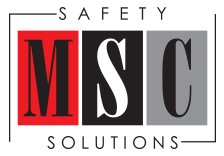Who’s Running Your House
Recently, one of my staff members wrote a blog for our website, “Safety Cops Need Not Apply”. I felt a sense of pride in that his and our entire team’s philosophies are in sync. This inspired me to share my philosophies with our readers.
If your Safety Professional is expected to police safety on the job site, you have set him/her up to fail. I can’t tell you how many times I have heard that a company released a Safety Professional because the accidents and injuries have not decreased, remained the same, or that the Safety Professional was too soft. This makes no sense. We are not here to police your safety, to be your Safety Cop.
Think about it this way.
When I was a kid, my Mother had rules that had to be followed in HER house. When the neighborhood kids came over to play, she didn’t care what the rules were at their house. This was her house and you would follow her rules, or go home. If the kids were running wild and tearing up the house, whose fault was this? It’s her house and she took responsibility for what happened in her house. This is how we look at a Superintendent’s project. This is his/her house and these are his/her rules. If the employees are not following our basic requirements for safety, whose fault is it? The Safety Professional is not in charge of the project and has no authority over the employees. Many companies are asking the Safety Professional to conduct site inspections, correct issues, and apply disciplinary action if needed. Mom would never allow someone to come into her house and discipline her kids, and neither should a Superintendent. The Safety Professional should never be asked to enforce safety. This is a sure way for your safety program/culture to fail.
Early in my career I went to work for a Superintendent, yes, I said I worked for him. On my first day he asked me if I knew what my job was and I thought, you arrogant so and so, yes I do. He proceeded to tell me that my job was to make him look good. Back to that, you arrogant so and so… He told me that by the end of the project, he would prove it to me. He then began to put my education into place. He started by scheduling weekly job site safety walks with me. When we walked the job, others would approach him to discuss production and/or quality issues. He would immediately stop, write down the persons name and inform them that he was conducting a safety walk and would get back to him/her when we were done.
This sent a clear message that this was his house and safety was a value he would not compromise.
The most important thing he did was make it back to each one of those people to address their concerns before the end of the day, establishing himself as a leader. During our walks, when safety issues were found he made it a point to take the lead in addressing and correcting the issues, not me. He also addressed safe behaviors in a supportive tone. It was clear that it was not my job to correct unsafe issues in his house. It was my job to train, educate, and assist all employees in ensuring we had a safe and productive work site. The message sent was that this was his house and he was taking responsibility for safety.
At the end of the job he called me into his office and asked, “How many lost time injuries did we have?” “None.” “How many equipment and/or liability claims did we have?” “None.” “Do I look good to Senior Management?” “Yes, you look great.” “Do you look good to your higher ups?” “Yes, I look great!” “If your job is to make me look good, does that make you look good?” “Yes, yes it does.”
Article from Colorado Construction and Design Magazine. Troy Clark’s article appears on page 52.






